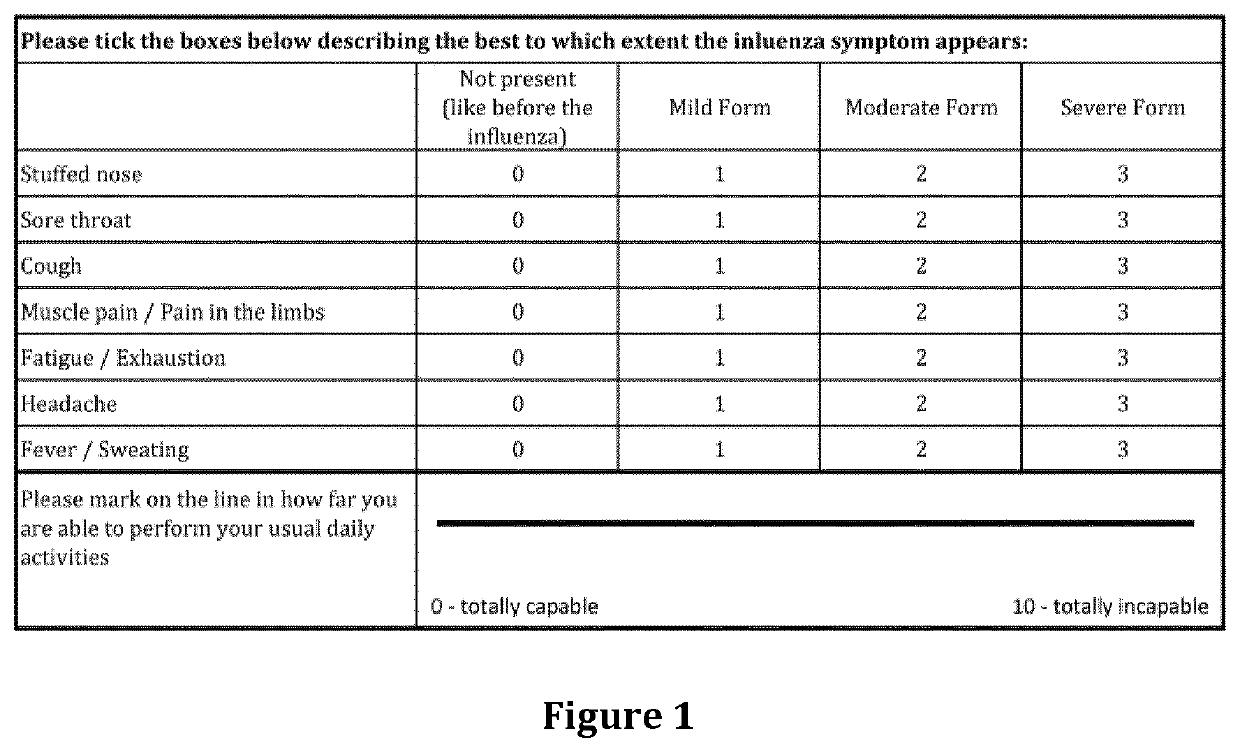Treatment of moderate to severe influenza
a technology for treating moderate to severe influenza and reducing the risk of developing resistance, applied in the direction of pharmaceutical delivery mechanism, dispensing, organic active ingredients, etc., can solve the problems of presenting serious public health and economic problems, and affecting the treatment effect of moderate to severe influenza
- Summary
- Abstract
- Description
- Claims
- Application Information
AI Technical Summary
Benefits of technology
Problems solved by technology
Method used
Image
Examples
example 1
Safety
[0052]In a controlled clinical environment, 38 healthy adults received single doses of either 0.9% saline solution as placebo or up to 750 mg of ASA by inhalation (placebo n=10, ASA n=28). ASA was administered in the form of an aqueous liquid solution comprising LASAG at a concentration of about 200 mg / ml, corresponding to an ASA concentration of about 100 mg / ml, using the AKITA® Apixneb® device at controlled inspiratory flow rate of 250 mL / sec and controlled volume of 800 mL.
[0053]In result, the administered doses were overall well tolerated; no serious events or severe adverse effects were observed and none of the participating subjects discontinued the study. The most frequently occurring treatment-emergent adverse effects were drug-related throat irritation and productive cough as well as vessel puncture site reactions from the diagnostic procedures. Although a higher rate of throat irritation occurred at higher doses, no effect on pulmonary function tests parameters was s...
example 2
Phase II Study on Safety and Efficacy of Inhaled LASAG and Placebo in Adult Hospitalized Patients with Moderate to Severe Influenza
[0054]In a multi-centre, randomised, double-blind, placebo controlled study with about 110 enrolled patients, inhaled LASAG was evaluated versus inhalation of placebo in adult patients who were hospitalized due to moderate to severe influenza and / or an influenza caused worsening of a another primary medical condition (e.g. diabetes, COPD, or other chronic lung diseases). Of these 110 enrolled patients, 81 were confirmed by a reverse transcription polymerase chain reaction (RT-PCR) test to be infected with an influenza virus, and received at least one inhalation of LASAG or placebo. It should be noted that although ASA is the active compound as explained above, the term LASAG inhalation or LASAG group is used throughout this study described below.
[0055]Patients, aged 18-80 years, who reported the onset of illness less than 120 hours (ideally less than 72 ...
PUM
| Property | Measurement | Unit |
|---|---|---|
| concentration | aaaaa | aaaaa |
| concentration | aaaaa | aaaaa |
| concentration | aaaaa | aaaaa |
Abstract
Description
Claims
Application Information
 Login to View More
Login to View More - Generate Ideas
- Intellectual Property
- Life Sciences
- Materials
- Tech Scout
- Unparalleled Data Quality
- Higher Quality Content
- 60% Fewer Hallucinations
Browse by: Latest US Patents, China's latest patents, Technical Efficacy Thesaurus, Application Domain, Technology Topic, Popular Technical Reports.
© 2025 PatSnap. All rights reserved.Legal|Privacy policy|Modern Slavery Act Transparency Statement|Sitemap|About US| Contact US: help@patsnap.com



